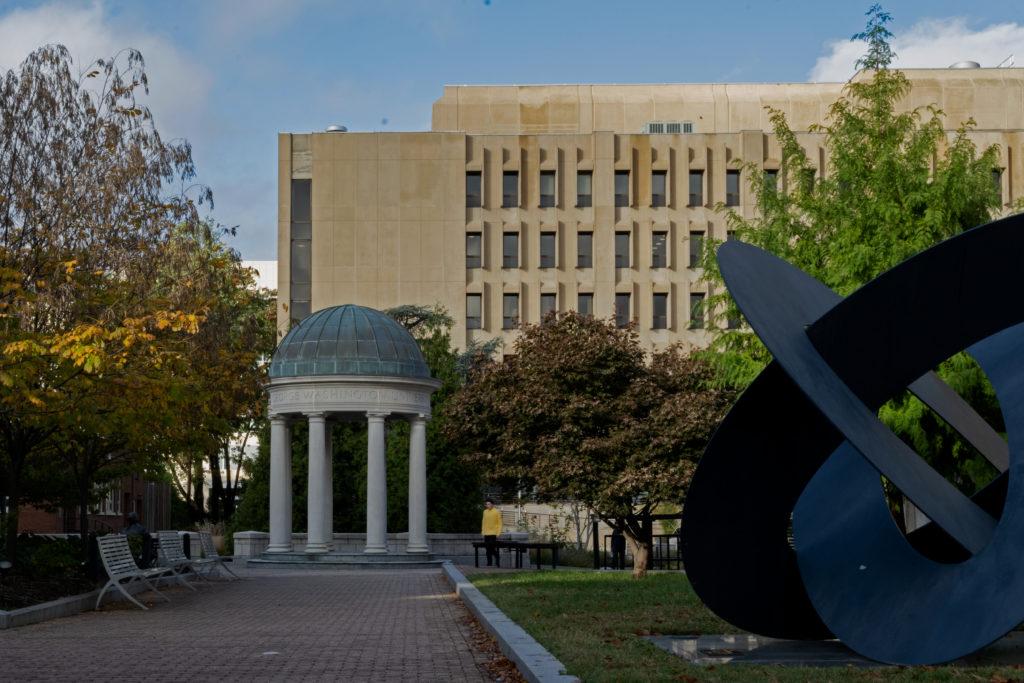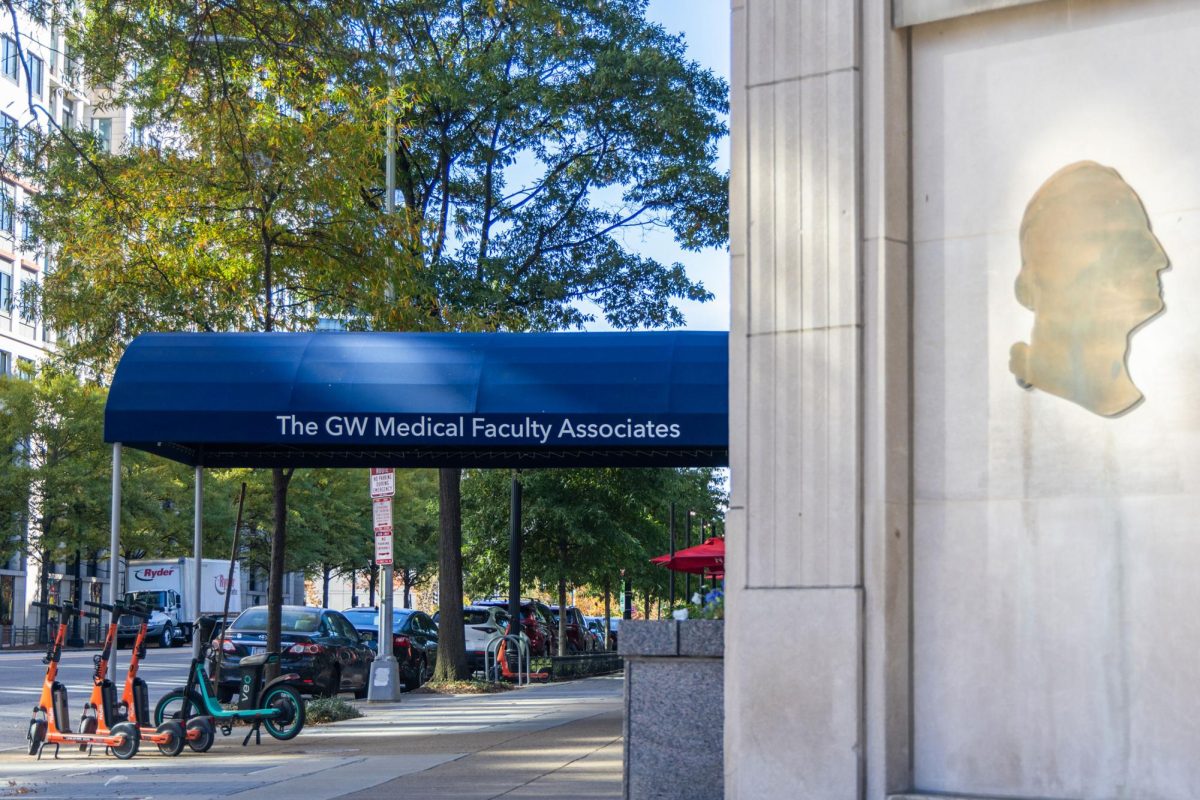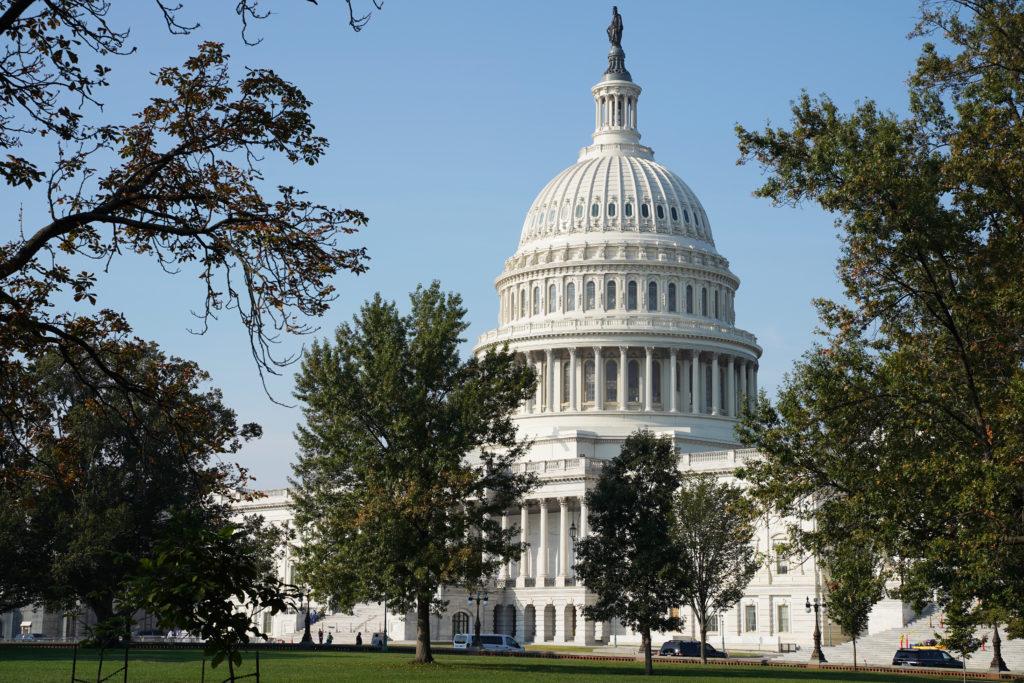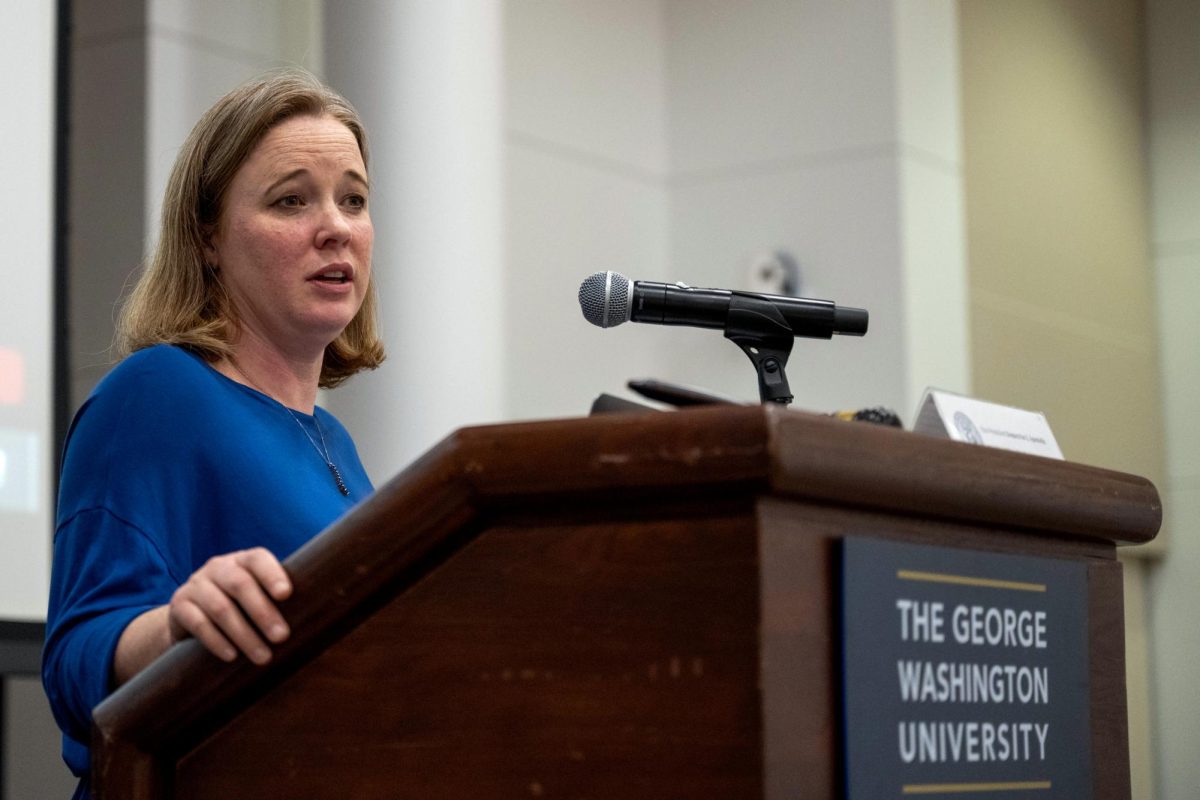As the University gears up for the arrival of an interim president without the guidance of an overarching strategic plan, officials have yet to provide updates on when they expect to establish a long-term vision for GW’s future.
University President Thomas LeBlanc was in the midst of overseeing a five-year strategic plan when the COVID-19 pandemic upended GW’s operations last year, leading administrators to suspend the process amid growing concerns from the GW community over a potential enrollment cut outlined in the plan. Now as GW prepares for an interim president to replace LeBlanc in January, the timeline for the University’s next strategic plan remains up in the air.
Administrators haven’t announced if incoming interim President Mark Wrighton will form a strategic plan during his tenure, which could last until June 2023 as officials search for a permanent leader. Wrighton has indicated he will prioritize improving the student experience – continuing one of LeBlanc’s top initiatives – while working to improve shared governance, the root of faculty concerns that led up to LeBlanc’s retirement.
“Our objective is to prepare the institution for a new president by coming to both an understanding and implementing that understanding,” Wrighton said in a September interview about defining shared governance.
Officials did not return a request for comment about when they will implement a strategic plan and what impact the absence of a strategic plan has had on planning efforts for the University’s long-term wellbeing.
Some administrators have said they can’t move forward with major University planning efforts without an overarching strategic plan.
Officials had intended to launch a major fundraising campaign this fall in conjunction with GW’s bicentennial. Instead, officials launched a smaller fundraising effort this month targeted at increasing financial aid.
Donna Arbide, the vice president for development and alumni relations, said in an interview last month that the larger push would be delayed until GW establishes a strategic plan to guide the campaign’s priorities.
“Having a strategic plan drives all parts of the business, enrollment management, fundraising, academic priorities,” Arbide said. “So it’s something that we all need to join in and agree on and start the build. So I’m definitely going to be a strong partner in this for sure, so that we can get ready to launch a major campaign and storytelling initiative.”
The University’s last major fundraising campaign – which raised $1 billion for student scholarships and new professors – ended in 2017 under former University President Steven Knapp.
Even as University-wide strategic planning efforts remain at a standstill, administrators are continuing to develop a long-term vision for GW’s physical campuses with the Strategic Campus and Facilities Master Plan.
“One of the questions that has come up in prior conversation is how can you have a strategic facilities plan without a strategic plan?” LeBlanc said at last month’s Faculty Senate meeting.
LeBlanc said at the meeting that officials are “on the clock” and must move forward with the facilities plan. He said administrators likely must approve proposed designs by the end of 2022 so they can be implemented before GW’s developmental rights expire in 2027.
“There’s not a separate clock for the strategic plan, but there is a clock for facilities,” LeBlanc said at the meeting. “And I think there are some decisions that we can make that are consistent with the future of our University without knowing all of the specifics of what the next generation of strategic planning might produce.”
The now-suspended strategic plan included as an underlying assumption the implementation of the 20/30 Plan, a hallmark initiative to cut undergraduate enrollment by 20 percent while increasing the proportion of STEM majors to 30 percent. The strategy was regarded as “obsolete” once the pandemic drove down enrollment levels below officials’ already reduced targets.
But the plan fueled tensions between LeBlanc and members of the University community, who said the strategy was conceived without following principles of shared governance to hear their concerns. Humanities professors said the push to increase the number of STEM majors could mean “major” funding cuts for non-STEM departments, and hundreds later cited the 20/30 Plan in their calls for LeBlanc to resign during the last academic year.
Jamie Cohen-Cole, a faculty senator and an associate professor of American studies, suggested at last month’s senate meeting that the facilities plan could be a way for officials to implement the 20/30 Plan in “stealth.” Chief Financial Officer Mark Diaz rejected the implication.
Faculty have also raised concerns in recent months about the inclusion of their perspectives during the development of major planning efforts relating to University academics coming out of the pandemic.
Former Provost Brian Blake suspended further development of his academic master plan in November of last year following the threat of a no-confidence vote over faculty concerns that he was not taking their perspective into consideration. Blake said the plan would create qualitative and quantitative assessments of GW’s academics, but he delayed its implementation after the Faculty Senate executive committee told him faculty fatigue was “too high” to launch the initiative amid the pandemic.
“Not only as provost, but as a member of the faculty, I am a true believer of transparency and shared governance, and I continue to seek input and make changes to plans based on feedback,” Blake said last November.
Blake also launched a post-COVID task force earlier this year to carry forward lessons learned during the pandemic. The task force released its recommendations last month.
Faculty Senate committees were asked to respond to the recommendations, and one raised concerns that the task force represented the “proliferation of administration-created committees” whose work could be completed through the senate’s existing structure.
“The Faculty Senate has standing committees that can/should be more involved in the planning, forming, and implementing of important academic committees like this Task Force,” the senate’s appointments, salaries, and promotion policies committee wrote in the report.







